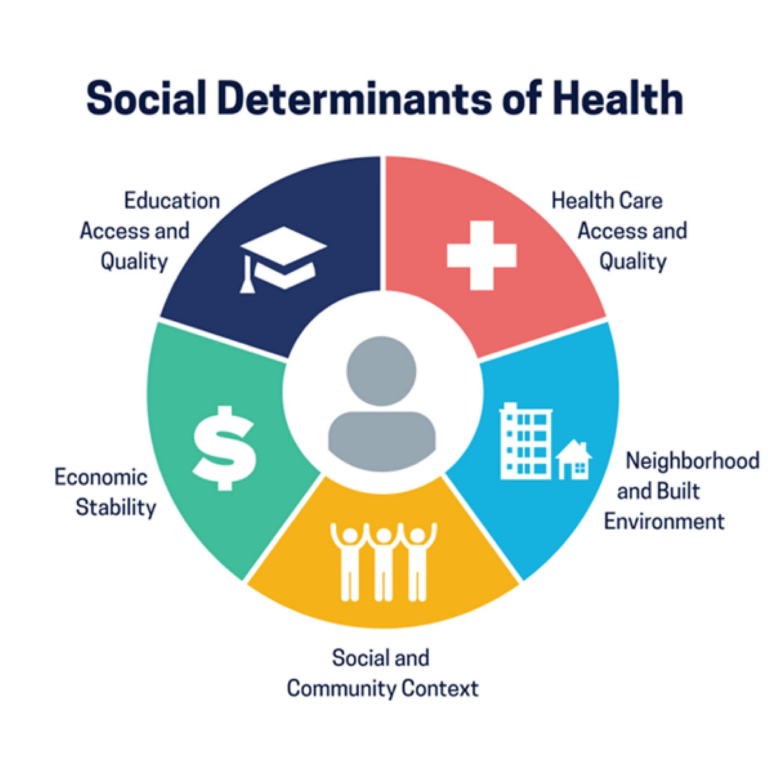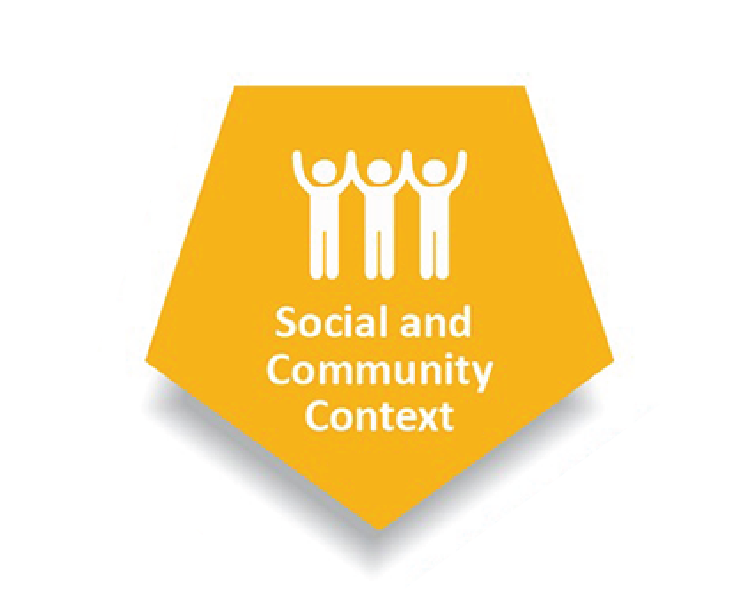It has been long-observed that substance use disorder and economic stability are closely related. Studies have shown that individuals in the lowest income bracket have been more likely to report struggling with substance use disorders (SUDs) than those in the highest income bracket. Knowing just how critical a factor economic stability, including related components such as housing, education, and employment, is to people suffering from SUD, it’s necessary that we take a closer look at the upstream social determinants of health (SDoH). A large umbrella covering many social factors, the SDoH directly influences an individuals’ likelihood of accessing resources for recovery, and sustaining long-term recovery. Because the SDoH includes a wide range of social determinants, we’re breaking down each category to help you recognize and understand the environmental factors that are critical to delivering effective care. Keep reading to learn a bit more about how economic stability plays a role in SUD, and addiction recovery.
What is Economic Stability?
As it relates to the SDoH, economic stability refers to stable income or employment that gives people access to the resources they need to live a healthy life. It’s important to note that stable work does not always equate to economic stability, as many people still may not earn enough to afford the things they need to stay healthy.
Currently 1 in 10 people in the United States are experiencing poverty. With so many individuals subjected to economic hardship, it’s likely that you will encounter many people within the recovery community who have experienced this at some point in their lives. Even more likely, working in the SUD field means that you will not only encounter individuals who have experienced economic instability, but will need to address this issue and assist in finding resources to help resolve economic turmoil. Keep reading to learn more about why it’s important to understand economic stability and the SDoH.
Why is Economic Stability Important?
While the need for economic stability to achieve a healthy life may seem clear, we need to look through the lens of how this specifically relates to SUD and recovery. As mentioned earlier, addiction is more likely to be reported by individuals in a lower income bracket – tying the two directly to one another. Adding to this, over 64% of individuals experiencing homelessness also have a substance use disorder (SUD).
A bit of a chicken or the egg situation, experiencing addiction can lead to economic instability and vice versa. If you’re working within the SUD industry, you will need to have the tools to address and propose solutions to this issue. Finding affordable housing resources, and tools to increase likelihood of stable employment are critical to providing effective care to your clients. Below we’ll outline how this contributes to your work as a Peer Professional.
Supporting Economic Stability in Clients
As you offer care to clients, you will be met with a range of circumstances. Some of your clients may have had stable employment prior to being diagnosed with an SUD, while others may have grown up with SUD and never experienced economic stability. Addressing each client as an opportunity to provide tailored support is the best way to meet people where they are. However, having a clear direction on how to address economic stability within your Provider/client relationships will only serve to help you impact your clients positively.
Using the SDoH as a framework, work with your client to uncover the core issues that contribute to their economic instability. Some questions to consider:
- Are they in need of a stable job?
- Could they benefit from additional schooling or training?
- Are there other factors, such as justice involvement, that limit the job field for your Client?
- Are there any programs your Client can apply to that will help them sustain economic stability?
Assess the circumstances fully, and let this serve as a guiding light while you find specific resources that can effectively support your client in achieving economic stability. Remember, your client might not have experience with these systems and processes, so assist them in learning how to navigate this new territory.
Understanding the Social Determinants Can Guide Your Practice
As we discussed above, understanding the SDoH is the first step in providing effective, tailored care to each of your clients. Considering these social determinants as you develop your Client’s recovery wellness plan can offer you the insight needed to provide the right resources, at the right time. Using the SDoH, such as assessing economic stability, to inform your support ensures that you’re upholding a high standard of care with clients, and it also assures them that you have diligently considered their unique needs along this process. Along with utilizing the SDoH, you can find all kinds of resources to assist in your Client support below!
Find Access to Housing, Treatment and more Recovery Resources!
Check out our resource hub for access to all kinds of resources, from best practices while working as a Peer Professional to affordable housing options by state.
Sources:
Addiction Help. “Addiction and Homelessness.” Addiction Help, 2023. https://www.addictionhelp.com/addiction/homelessness/#:~:text=People%20who%20are%20homeless%20suffer,dependency%20while%2026%25%20abuse%20drugs.
Accessed 21 July 2023.
NIH. “Socioeconomic Disparities and Self-reported Substance Abuse-related Problems.” National Library of Medicine, 2018. https://www.ncbi.nlm.nih.gov/pmc/articles/PMC6494986/#:~:text=After%20adjustment%20for%20age%2C%20race,1.72%5D%20among%20those%20who%20reported.
Accessed 21 July 2023.
U.S. Department of Health and Human Services. “Social Determinants of Health – Economic Stability.” Healthy People 2030, 2023. https://health.gov/healthypeople/priority-areas/social-determinants-health.
Accessed 18 July 2023.



